

You land on a website, hoping to find answers to your questions. However, instead, you encounter walls of jargon, vague promises, and a voice that feels impersonal. Frustrating, isn’t it? For businesses, your website isn’t just a digital billboard, it’s often the first handshake with a potential customer. It needs to speak, relate, and convert.
As someone who's spent years working with businesses across BFSI, technology, and education, we’ve seen firsthand how thoughtfully crafted content can transform a brand’s online presence. Let’s look deep into the art and science of writing website content that doesn’t just communicate but captivates.
Your website is often the first interaction someone has with your business. It’s your digital elevator pitch, and storefront combined. Did you know that users form an opinion about your website in just 50 milliseconds? That’s barely enough time to blink.
Great content is what grabs attention, holds it, and converts visitors into loyal customers. It’s not just a supporting act; it’s the star. While design, visuals, and videos enhance the user experience, they’re only amplifiers. A stunning design without a powerful message is like a billboard with no words. It might catch the eye but leaves no impact.
Your content should start with a deep understanding of your audience, backed by smart market research. When your words speak directly to their needs, even the best visuals take a backseat, letting your message drive decisions—and win wallets.
|
Content isn’t filler—it’s the core of your website’s identity. — LexiConn Content |
When your content is valuable, users don’t just stay longer; they share it. This increases your website’s reach. This isn't just a win for engagement; it’s also a key player in improving your SEO. Google ranks your site based on content quality and the links within it. So, the more valuable your content, the higher you rank in search results.
High-quality content is for action. It drives click-through rates (CTR) and attracts backlinks, both of which are vital for SEO success. When users engage with your content and link to it, Google recognizes your content as relevant and authoritative. These backlinks, along with the strategic use of keywords, ensure your website climbs the ranks and reaches that coveted page 1 of search results. Let’s face it, anything after page 2 is digital obscurity.
|
Without quality content, SEO is like a body without a soul. - LexiConn Content |
In fact, without quality content, SEO is hollow. It’s like a body without a soul, it won’t go far. But with the right content, you build not only a solid SEO strategy but also brand authority. Your business becomes a trusted source of information, positioning you as a leader in your field. Each piece of content you publish strengthens your presence, both with users and search engines.
Your homepage is the digital equivalent of a storefront window. It needs to be captivating and informative in seconds. The objective of this page is to create a magnetic first impression that encourages visitors to explore further. Ensure to use a succinct value proposition, key services or products, and easy navigation to guide users.
Example:
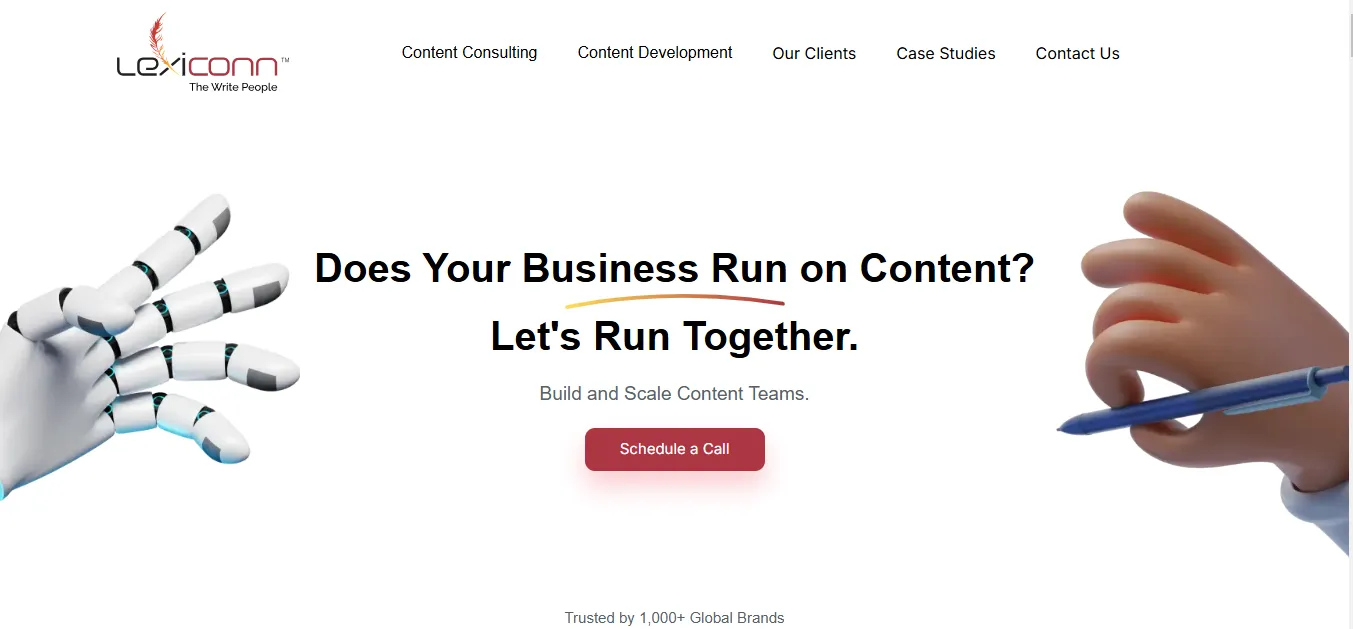
LexiConn uses a clean, minimalist design to immediately convey our suite of business tools. Our headline, “Does Your Business Run on Content? Let's Run Together,” is to relate universally while addressing our audience’s primary goals. We’ve placed CTAs like “Schedule a Call” prominently to guide visitors to contact us without getting confused.
|
Pro Writing Tips #1: Use dynamic elements like sliding banners or embedded videos to maintain interest. Avoid clutter. Every element should serve a purpose. |
This section is your brand’s handshake with visitors. A well-crafted “About Us” page humanizes your brand and builds trust. It helps your business showcase your purpose, values, and achievements in a way that aligns with your audience's interests. You can include your business’ founding story, mission statement, key milestones, leadership bios, and media features.
Example
Tata Groupemphasizes its legacy of over 150 years, instilling confidence through its long-standing reputation and diverse impact.

TATA Group has added links to know more about their legacy. You can add similar CTAs or even case studies, team introduction, etc.

|
Pro Writing Tips #2: Use storytelling to convey your journey. Highlight challenges you’ve solved for clients to create an emotional connection. |
This is where the magic happens. Your offerings need to be presented in a way that’s both detailed and easy to understand. It helps users quickly identify the solutions that suit their needs. You can feature highlights, pricing, benefits, and customer testimonials or use cases. You could include buttons like “Request a Demo,” “Buy Now,” or “Subscribe Today” for easy transitions.
Example
Paytm lists its services with clear descriptions and visuals, making it easy for users to navigate.
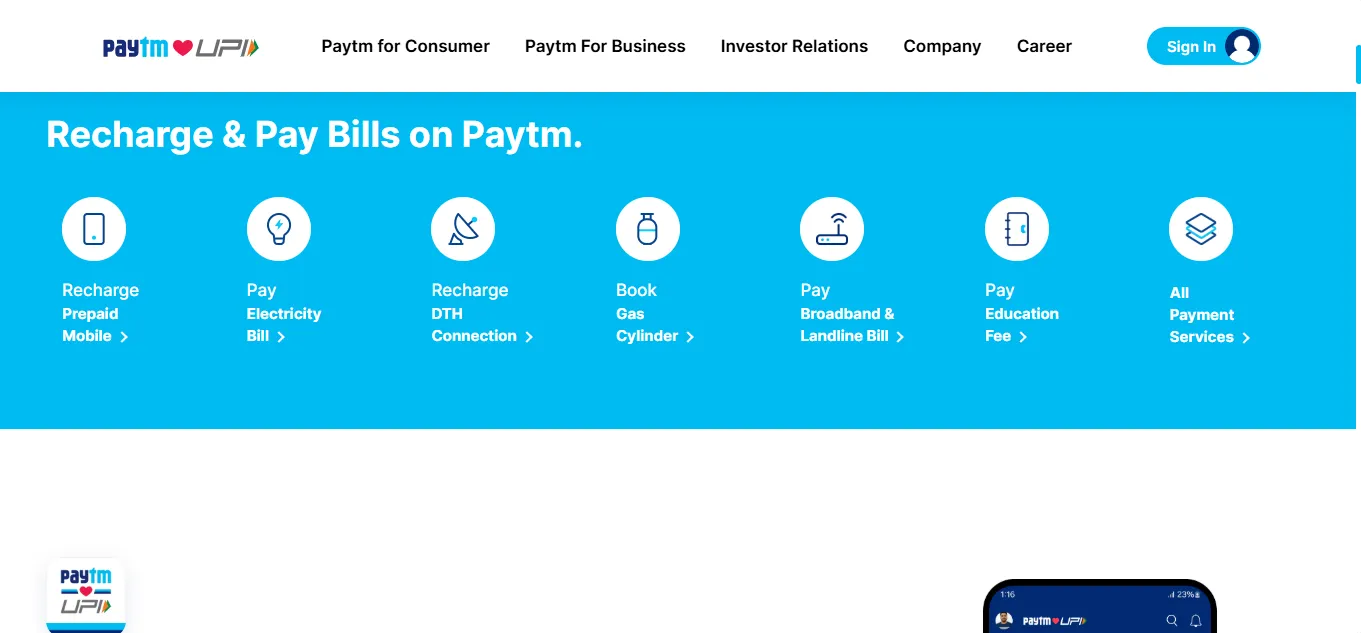
|
Pro Writing Tips #3: Use comparison charts to highlight the value of different packages or solutions. Add FAQs for complex services to preempt doubts. |
Nothing speaks louder than success stories and customer experiences. You can reinforce trust by showing real-world applications of your product or service.
Include short testimonials, in-depth case studies, client logos, and video interviews.
Example
LexiConnpublishes case studies detailing how they’ve helped businesses in sectors achieve content transformation and growth.

|
Pro Writing Tips #4: Include measurable outcomes, like “Increased sales by 30%” or “Reduced processing time by 40%.” Use a mix of text, video, and infographics for variety. |
Your blog is where you can establish your authority while educating and engaging your audience. Provide valuable insights that answer your audience's questions or solve their problems. You could include articles, whitepapers, videos, and infographics on industry trends or how-to guides. You can add links like “Subscribe for Updates” or “Download Our Free Guide” to build a subscriber list.
Example
HDFC Bank runs a blog featuring articles like “Tax Savings”, adding practical value while subtly promoting their offerings.
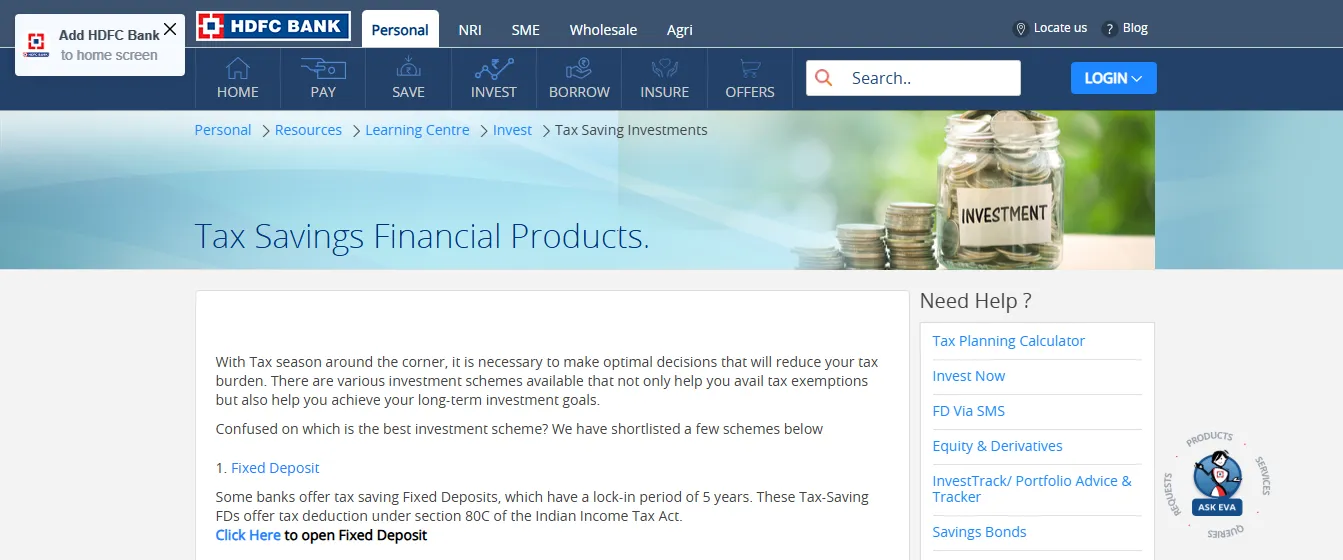
|
Pro Writing Tips #5: Use keyword research to align blog topics with popular search queries. Format content for readability with bullet points, headers, and visuals. |
Your contact page should make it as easy as possible for visitors to reach you. Remove barriers to communication and provide multiple options for contact.
Include phone numbers, email addresses, office locations, and social media links. Use direct phrases like “Let’s Talk” or “We’re Here to Help” to encourage interaction.
Example
LexiConn has a well-defined, clear design with easy navigation tabs in place. Navigating to the Contact Us button is a no-hassle business.
|
Pro Writing Tips #6: Add a contact form with fields tailored to your needs, like “Reason for Inquiry” or “Preferred Contact Time.” |
FAQs help reduce friction in the decision-making process by addressing common doubts. It saves time for both your team and customers by providing instant clarity.
It answers to pricing, delivery, and product/service-specific queries.
Example
Airtel’s FAQ page addresses broadband installation and payment-related concerns, making onboarding easier.
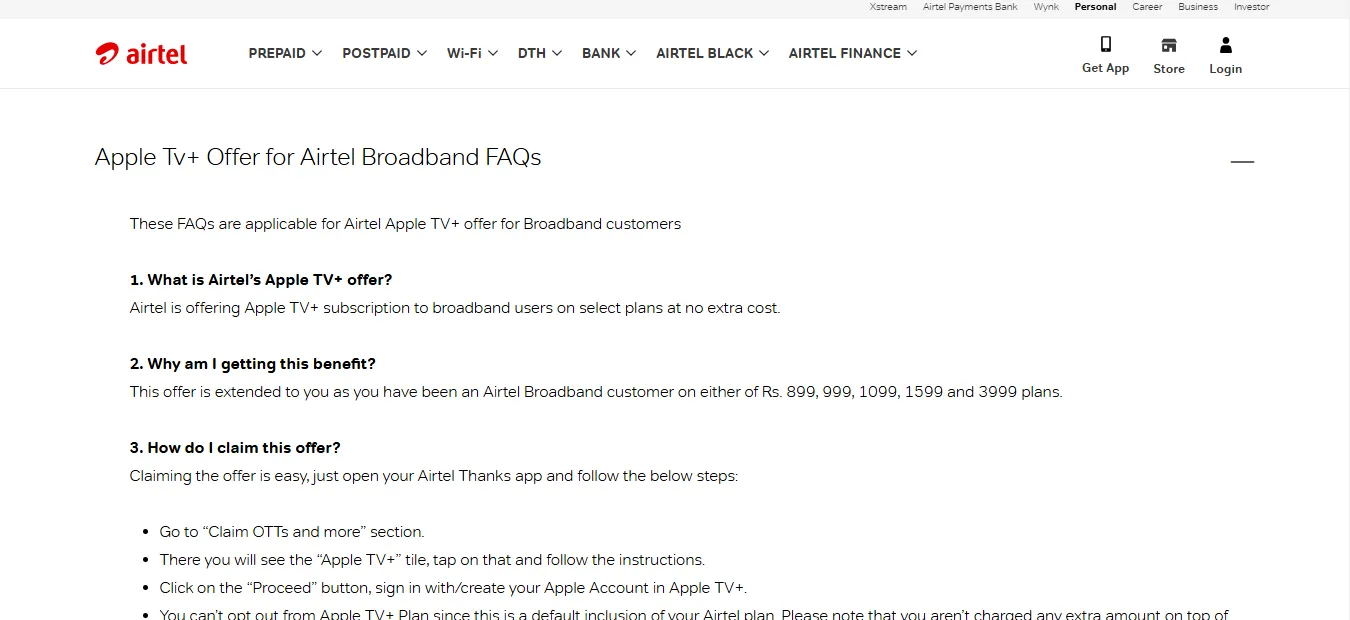
|
Pro Writing Tips #7: Use categories for better organization. Ensure answers are concise but detailed enough to eliminate follow-up questions. |
Landing pages are built with one goal in mind: conversions. They are perfect for campaigns, special offers, or lead generation. It directs users to take a single action—sign up, buy, or learn more. Include a compelling headline, benefits, social proof, and a strong CTA. You can use action-oriented phrases like “Start Your Free Trial” or “Claim Your Discount.”
Example
Amazon Prime’s landing page highlights benefits like free delivery and exclusive content, with a clear CTA: “Join Now.”
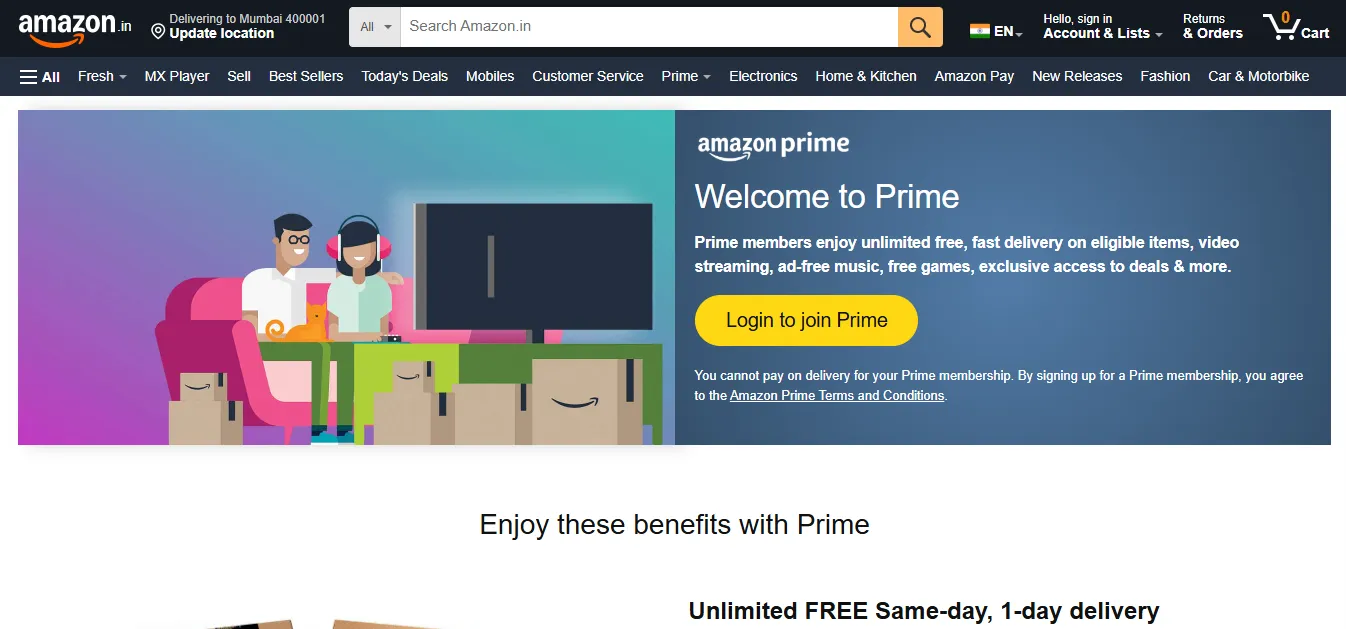
|
Pro Writing Tips #8: Keep the focus narrow. Optimize for speed and mobile responsiveness. Use scarcity tactics like “Offer Ends Soon” to create urgency. |
Before you write a single word, understand your audience’s needs, challenges, and goals. The more specific your audience insights, the better you can craft content that speaks directly to them.
Example: A tech startup targeting SMEs might write, “Streamline operations without burning your budget—discover how our solutions can save 30% on annual expenses.” |
A website visitor decides within seconds whether to stay or leave. Your content must communicate value upfront to hold their attention.
|
Example: Instead of saying, “We’re an award-winning IT solutions provider,” say, “Cut your downtime by 50% with our agile IT support system.” |
Website visitors skim content, looking for key takeaways. Structure your writing so they can quickly grasp your message.
|
Pro Writing Tips #9: Follow the inverted pyramid style: start with the most important information first, then add supporting details. |
Features describe what your product/service is; benefits explain how it solves the user’s problems. Great website content connects emotionally through benefits.
|
Example
|
Search Engine Optimisation (SEO) ensures your content reaches the right audience via search engines. However, SEO should enhance readability—not compromise it.
How to Do It?
|
Pro Writing Tips #10: Focus on long-tail keywords like “affordable CRM for small businesses” instead of competitive short phrases like “best CRM.” |
Complicated language alienates readers. Keep your content clear, concise, and jargon-free.
|
Example: Instead of “A solution was implemented to improve operations,” write “We implemented a solution that improved operations.” |
Your website content must guide users to take action, whether it’s signing up, purchasing, or contacting you. CTAs are critical.
|
Pro Writing Tips #11: Pair CTAs with benefits: “Start your free trial and double your productivity in 30 days.” |
Storytelling makes content more relatable and memorable by adding a human touch. It builds trust and emotional connection with your audience.
|
Example: Instead of “A solution was implemented to improve operations,” write “We implemented a solution that improved operations.” |
Visuals complement your writing, improve understanding, and keep readers engaged.
|
Pro Writing Tips #12: Tools like Canva, Unsplash, and Pexels offer free resources for high-quality visuals. |
Nothing undermines credibility faster than poor grammar, typos, or disorganised content.
How to Do It?
|
Pro Tip: Run A/B tests on headlines, CTAs, and content length to see what resonates most with your audience. |
At LexiConn, we understand that exceptional website content does more than just fill space—it builds connections, inspires action, and drives measurable results. With years of experience and a proven track record across industries, here’s why we’re the right partner for your content needs:
Writing great website content is about understanding your audience, delivering value, and keeping things clear and compelling. Implement these tips, and your content won’t just attract visitors—it will turn them into loyal customers.
Let’s make your website content work smarter—reach out to LexiConn today!



I have read and accept the Privacy Policy
Read More